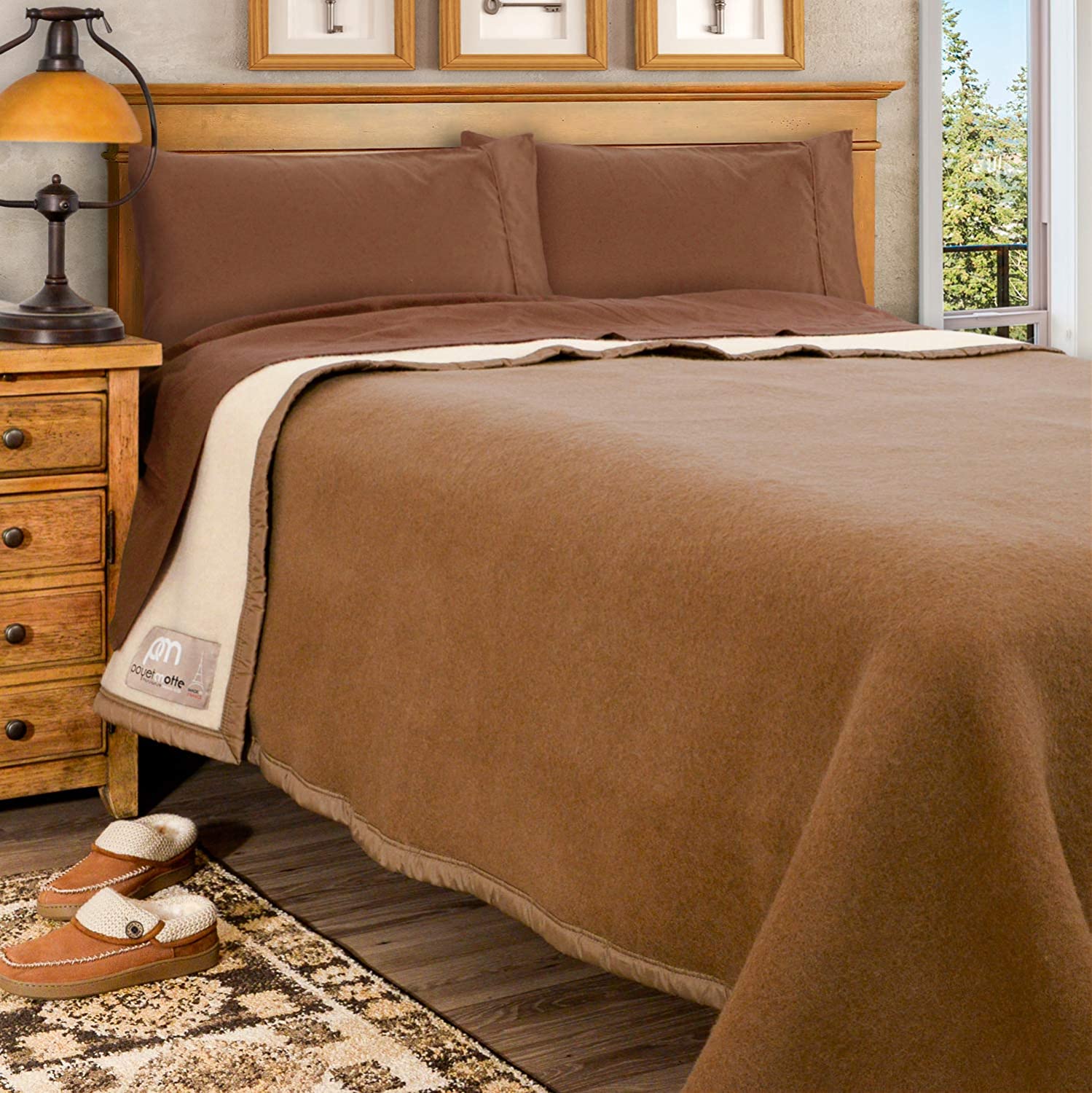There are rich plush wool fabrics on both sides, and the surface has rich plush fabrics. Bed wool fabrics with thermal insulation properties can also be used as bedspreads, tapestries and other decorations. It is divided into three categories: pure wool blanket, blended wool blanket and chemical fiber blanket. According to the weaving method, it is divided into organic weaving, tufting, warp knitting, needle punching, stitching and so on. There are jacquard, printing, plain color, mandarin duck color, Daozi, lattice and so on. The styles of the blanket surface include suede type, standing pile type, smooth wool type, rolling ball type and water pattern type. Strong elasticity and warmth, with a thick texture. Mainly used as a bed cover and double as decorations such as bedspreads or tapestries. The appearance of the blanket is varied, with a plump and curled suede type, and the pile is erect and velvety. Blanket patterns are available in a wide variety of colors.
The surface is rich in plush and has warm properties of bed wool fabrics, which can also be used as bedspreads, tapestries and other decorations. There are three types of pure wool blankets, blended wool blankets and chemical fiber blankets. Pure wool blankets use semi-fine wool as raw material, generally use 2-5 male carded yarn as warp and weft, or use combed yarn, cotton yarn, man-made fiber yarn as warp, and carded yarn as weft interweaving, and twill breakage can be used. Double twill weft, double weft satin weave, double-layer twill weave, etc. The fabric is milled and double-sided raised. The weight of each blanket is about 2 to 3 kg. Blended blankets contain 30 to 50 percent viscose, and sometimes regenerated wool is added to keep costs down. The chemical fiber blanket uses acrylic fiber as the main raw material, with bright color and soft hand feeling. The weaving methods of blankets are divided into two types: weaving and knitting. Woven blankets are divided into two types: ordinary wool looms and pile looms; knitting is divided into warp knitting, tufting, needle punching, stitching and so on. Fleece woven blankets and warp knitted blankets both use the cutting pile method to obtain the suede, so the fur is erect, the suede is flat, the hand feels soft and elastic, and it is the higher-end variety of blankets. In addition to fluffing, the post-processing also undergoes processing such as steaming, combing, scratching, ironing, shearing or rolling balls according to the requirements of different varieties. The appearance of blankets is diverse, including suede type with plump and curled fluff, standing pile type with straight and velvety fluff, smooth wool type with smooth and long fluff, rolling ball shape like lambskin, and water with irregular ripples. Pattern, etc. Blankets come in a wide variety of patterns and colors, including geometric patterns, flowers, landscapes, animals, and more. Generally, blankets are decorated and reinforced with overlocking, wrapping, and fringe.
Blanket Maintenance
1. When raising a blanket, it should be strictly forbidden to get wet to avoid mildew, avoid exposure to the sun and be stuffy and heat, to prevent the luster from worsening and feel rough, and apply insect repellant to prevent moth-eaten.
2. It can be pressed heavily to avoid hairs and creases.
Blanket cleaning
1. Special detergents with good quality and neutral low-alkali detergents should be used for washing, and the water temperature should be around 35 °C.
2. The blanket cannot be machine washed. In order to keep the blanket clean and reduce the washing times of the blanket, a blanket cover can be added to the blanket.
3. The blanket should be aired frequently during use and tapped gently to remove the sweat, dust and dander adhering to the blanket, keep the blanket clean and dry, and prevent insects and mildew.
4. It also needs to be dried before storage. Put a few mothballs wrapped in paper in the folded blanket, wrap it in a plastic bag, seal it, and store it in a dry cabinet.
Skillfully sunbathing thick blanket
The thicker the blanket, the harder it will be to dry out. As long as you use a little knowledge of physics, you can easily dry the thick blanket:
Method: Drying the blanket diagonally on the clothesline can greatly shorten the drying time. Dry the blanket on a clothes rail and tap lightly with a small stick
Post time: Aug-05-2022



